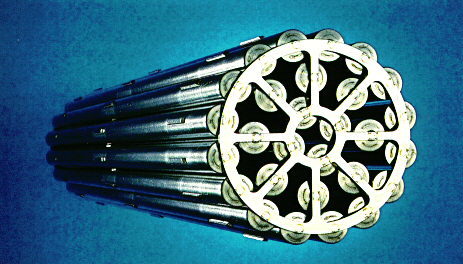Springfield Nuclear Power Plant
You are given
4 uranium rods
and you are to discover which
one
of them is faulty. The faulty rod is
either lighter or heavier
than the others. You are also given a scales and a rod of the right mass. What is the
minimum
number of times you have to use scales in order to discover the faulty rod?

The answer is 2.
This section requires Javascript.
You are seeing this because something didn't load right. We suggest you, (a) try
refreshing the page, (b) enabling javascript if it is disabled on your browser and,
finally, (c)
loading the
non-javascript version of this page
. We're sorry about the hassle.
It can be done in 2 weighings. First, we will take any two rods, say rod A and rod B, and put them on the scales.
If they balance each other, then either rod C or rod D is the faulty rod. We will place rod A and rod C on the scales now. If they balance, then rod D is the faulty rod. If they don't balance, then rod C is the faulty rod.
If rods A and B do not balance each other, then one of these is faulty. We will replace rod B with rod C. If the scales are now balanced, then rod B is the faulty rod. Otherwise, rod A is the faulty rod.
We see that two weighings are sufficient to determine the faulty rod. The faulty rod cannot be identified in just one weighing. □